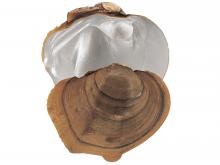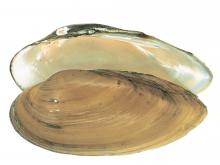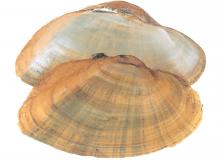Aquatic Invertebrates
Media

Species Types
Scientific Name
Quadrula nodulata
Description
This favored habitat of this vulnerable species is large streams or rivers in firm sand and mud. The bumps on the shell may help to anchor it in the river bottom.
Media

Species Types
Scientific Name
Lasmigona complanata
Description
The shell of this mollusk is large and impressive in overall size. Although fairly flat, it can be more than 8 inches long. A large wing on the heelsplitter can be painful if you step on it.
Media

Species Types
Scientific Name
Lampsilis teres
Description
The uniform shell thickness and hard, white nacre made this mussel a favorite for button manufacturing, in the days before most buttons were made of plastic.
Media

Species Types
Scientific Name
Bivalve molluscs in order Unionoida
Description
Secretive and seldom seen, freshwater mussels are extraordinarily diverse in Missouri. We have nearly 70 species within our borders. Many are declining, and several are endangered.
Media

Species Types
Scientific Name
Cyclonaias tuberculata
Description
Before buttons were made of plastic, they were made of shell. Because only white buttons were in demand, the coppery-purple shell of this species made it worthless for the button industry.
Media

Species Types
Scientific Name
Alasmidonta marginata
Description
The elktoe is one of many Missouri mussels with a declining population.
Media

Species Types
Scientific Name
Various species in the subclass Hirudinea
Description
Most people are repulsed by leeches. But once you get past the fact that many species are parasitic bloodsuckers, you will discover that they are fascinating creatures with an important role in nature.
Media

Species Types
Scientific Name
Freshwater species in the phylum Bryozoa
Description
Bryozoans are tiny, filter-feeding invertebrates. They create colonies that can be mossy, branching, or round and jellylike.
See Also
About Aquatic Invertebrates in Missouri
Missouri's streams, lakes, and other aquatic habitats hold thousands of kinds of invertebrates — worms, freshwater mussels, snails, crayfish, insects, and other animals without backbones. These creatures are vital links in the aquatic food chain, and their presence and numbers tell us a lot about water quality.





















